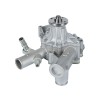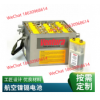|
International Payment Instruments Comparison Chart |
|||
|
Payment Method |
Features |
Advantages |
Disadvantages |
|
Wire Transfer |
Fully electronic means of payment Uses correspondent bank accounts and Fed Wire U.S. Dollars and foreign currencies Same convenience and security as domestic wires Pin numbers for each authorized individual Repetitive codes for frequent transfers to same Beneficiaries |
Fastest way for Beneficiary to receive good funds Easy to trace movement of funds from bank to bank |
Cost is usually more than other means of payment Funds can be hard to recover if payment goes astray Intermediary banks deduct charges from the proceeds Details needed to apply funds received for credit management purposes are often lacking/insufficient Impossible to stop payment after execution |
|
Foreign Checks |
Paper instrument that must be sent to Beneficiary and is payable in Beneficiary's country Uses account relationships with foreign correspondent banks Available in U.S. Dollars and all major foreign currencies |
Convenient when Beneficiary's bank details are not known Useful when information/ documentation must accompany payment (subscriptions, registrations, reservations, etc.) Relatively easy to stop payment if necessary |
Mail or courier delivery can be slow Good funds must still be collected from the drawee bank If payable in foreign currency, value may change during the collection period Stale dating rules differ in various countries |
|
Commercial Letters of Credit |
Bank's credit replaces Buyer's credit Payment made against compliant documents Foreign bank risk can be eliminated via confirmation of a bank in Beneficiary's country Acceptance credits offer built-in financing opportunity |
Rights and risks of Buyer and Seller are balanced Seller is assured of payment when conditions are met Buyer is reasonably assured of receiving the goods ordered Confirmation eliminates country risk and commercial risk |
More costly than other payment alternatives Issuance and ammendments can take time Strict documentary compliance by Seller is required Reduces applicant's credit facilities |
|
Standby Letters of Credit |
Powerful instrument with simple language Increasingly popular in U.S. and abroad Foreign bank risk can be eliminated via confirmation of a bank in Beneficiary's country "Evergreen" clauses shift expiry risk from Beneficiary to issuer |
May be cheaper than Commercial Letter of Credit More secure than open account or documentary Collection Discrepancies less likely than under Commercial L/C Confirmation eliminates country risk and commercial risk |
Weak language can give Beneficiary unintended advantages More costly than documentary Collections Reduces Buyer's credit facilities |
|
documentary Collections |
Seller uses banks as agents to present shipping documents to Buyer against Buyer's payment or promise to pay With Direct Collection Letter (DCL), Seller ships and sends shipping documents directly to Buyer's bank, which collects and remits funds to Seller's bank |
Somewhat more secure than open account Cheaper and less rigid than Commercial L/C No strict compliance rules apply No credit facilities required |
Country risk and commercial risk exist No guaranty of payment by any bank No protection against order cancellation No built-in financing opportunity as with Commercial L/C |






